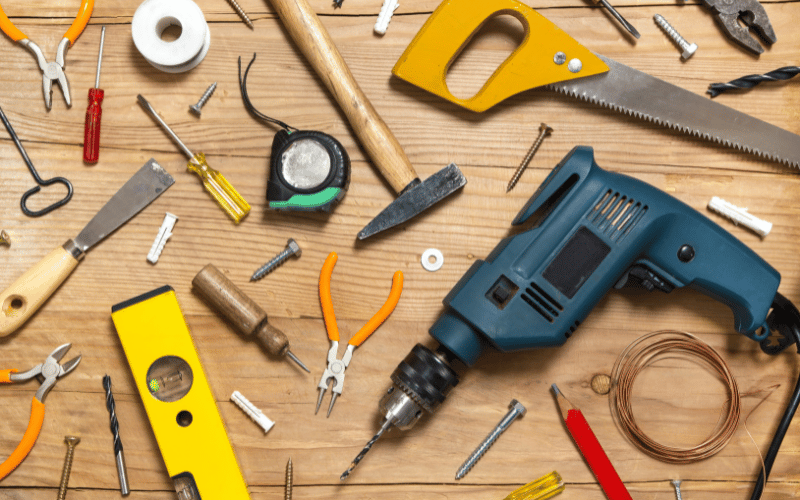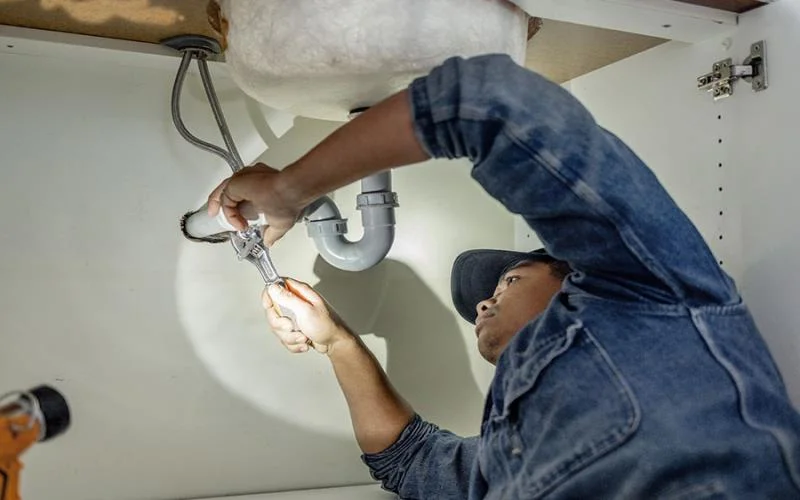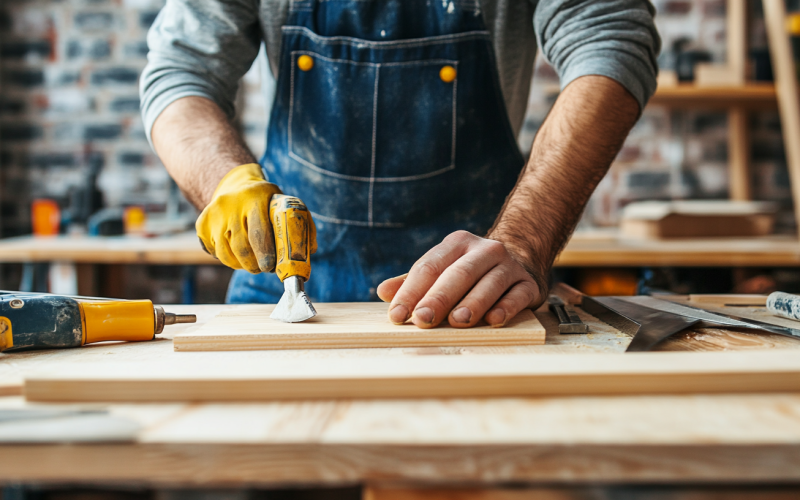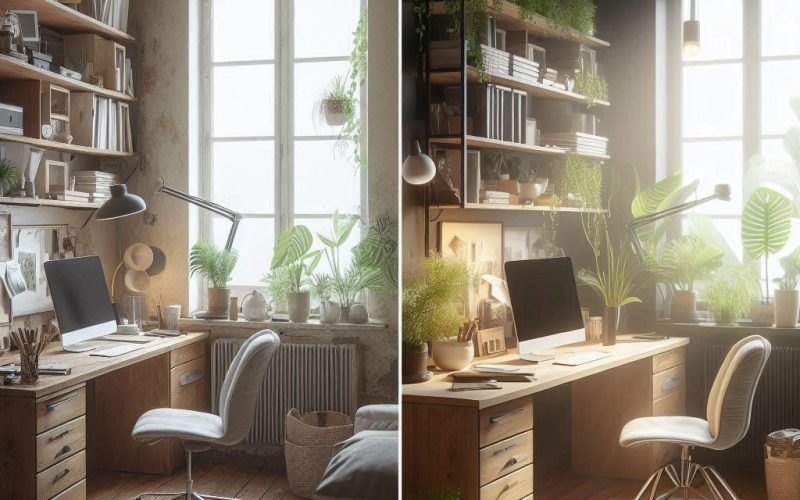Maintaining a comfortable and functional home requires regular attention. Over time, even the most well-kept homes need updates or improvements to keep pace with your lifestyle.
While hiring professionals is always an option, continuously engaging experts might not be feasible, even in a city like Houston, Texas, where the cost of living is relatively affordable.
This might be due to budget constraints, the availability of professionals, or simply the desire to take a hands-on approach to home improvement. DIY remodeling projects offer a practical solution, but they require some knowledge and the right tips to achieve success.
Whether you’re looking to enhance your living space or tackle essential repairs, these eight DIY home remodeling tips will help you get started.
1. Start with a Plan
Before diving into any DIY remodeling project, start with a clear plan. This involves outlining what you want to achieve, gathering the necessary materials, and setting a realistic timeline.
Planning helps you avoid common pitfalls that can lead to costly mistakes and frustration. It would be best to create a detailed list of tasks and then break them down into easier and smaller steps.
2. Remove Obstructions Before Starting

Clearing the work area is one of the most important steps before beginning any remodeling project. Furniture, decor, and personal belongings can get in the way, making it difficult to work efficiently and safely. Removing items allows you to have a clear, open space to focus on the tasks at hand.
In a city like Houston, where summers are notoriously hot and humid, it’s wise to consider renting a climate-controlled self-storage unit to temporarily store these items.
This not only protects your belongings from the harsh weather but also frees up space in your home, making the remodeling process smoother. When searching for the best Houston TX storage units, make sure you read reviews online and only select a facility that seems reliable.
By taking the time to remove obstructions, you set the stage for a more organized and efficient project.
3. Focus on One Room at a Time
When remodeling your home, it’s easy to get carried away with the excitement of making changes. However, tackling too many projects at once can lead to burnout, incomplete tasks, and a chaotic living environment.
To avoid this, focus on one room or area at a time. This approach allows you to concentrate your efforts, resources, and attention on a single project, leading to better results.
4. Invest in Quality Tools

The success of your DIY remodeling projects largely depends on the tools you use. Therefore, invest in quality tools to achieve professional-looking results. Basic tools such as a reliable drill, saw, level, and tape measure are essential for most tasks. While it might be tempting to go for cheaper options, high-quality tools are an investment that will pay off in the long run.
Quality tools not only last longer but also make your work easier and more efficient. For instance, a good power drill can save you time and effort compared to using a manual screwdriver. Moreover, having the right tools on hand means you’re less likely to face delays in your project.
5. Paint with Purpose
Refresh your home’s paint, and it’ll start to look brand new in an instant. However, painting requires careful preparation to achieve a smooth and long-lasting finish. Before you start painting, take the time to properly prep the surfaces.
This includes cleaning the walls, repairing any cracks or holes, and applying painter’s tape to protect trim and edges. In some cases, applying a primer may be necessary to ensure even coverage and better adhesion of the paint.
When choosing paint colors, consider the overall mood you want to create in the room. Lighter colors can make a space feel larger and more open, while darker shades add warmth and coziness. Also, consider the type of paint finish—matte finishes hide imperfections, while glossy finishes are easier to clean.
6. Update Fixtures and Hardware
Updating fixtures and hardware is a cost-effective way to give your home a fresh look without undergoing major renovations. Small changes, such as replacing cabinet handles, light switches, or faucets, can elevate the overall aesthetic of a room. These updates are simple to execute and provide an immediate visual upgrade.
When selecting new fixtures and hardware, consider the style and finish that will best complement your existing decor. For example, brushed nickel or matte black finishes are popular choices that add a modern touch to kitchens and bathrooms.
Additionally, energy-efficient fixtures, such as LED lighting, can improve functionality, create a better ambiance, and will lead to reduced electricity bills! By focusing on these small details, you can achieve a polished, cohesive look that elevates your living space.
7. Learn Basic Plumbing and Electrical Skills

While some home improvement projects require professional expertise, learning basic plumbing and electrical skills can save you both time and money on smaller tasks. Simple repairs, such as fixing a leaky faucet, replacing a light fixture, or installing a new outlet, are within the reach of most DIY enthusiasts with the right knowledge and tools.
Before attempting any plumbing or electrical work, ensure you understand the basics and follow safety guidelines. For plumbing tasks, familiarize yourself with how to shut off the water supply and the types of tools you’ll need, such as a pipe wrench or plumber’s tape.
For electrical tasks, always turn off the power at the breaker box and use a voltage tester to confirm that the circuit is de-energized. By mastering these basic skills, you can handle minor repairs and installations with confidence, keeping your home in good working order without the need for frequent professional intervention.
8. Repurpose and Recycle Materials
Before purchasing new materials, take stock of what you already have that could be reused or repurposed. For example, old wood from a previous project could be transformed into shelving or decorative accents, and outdated fixtures might find new life with a fresh coat of paint or a different application.
Repurposing materials allows you to add a unique, personal touch to your home while reducing waste. It also encourages creativity as you find new ways to use items that might otherwise be discarded.
You can also get high-quality materials from salvage yards or online marketplaces at a fraction of the cost of buying new items. By prioritizing repurposed and recycled materials, you contribute to sustainability and create a home that reflects your individual style.
You got this!
Embarking on DIY home remodeling projects can be both rewarding and practical. Whether you’re enhancing your living space for your comfort or preparing it for future resale, these strategies will help you achieve your goals efficiently and effectively. Remember, successful DIY remodeling is about balancing your skills with the right tools and knowing your limits, ensuring that your home remains a place of comfort and pride.











